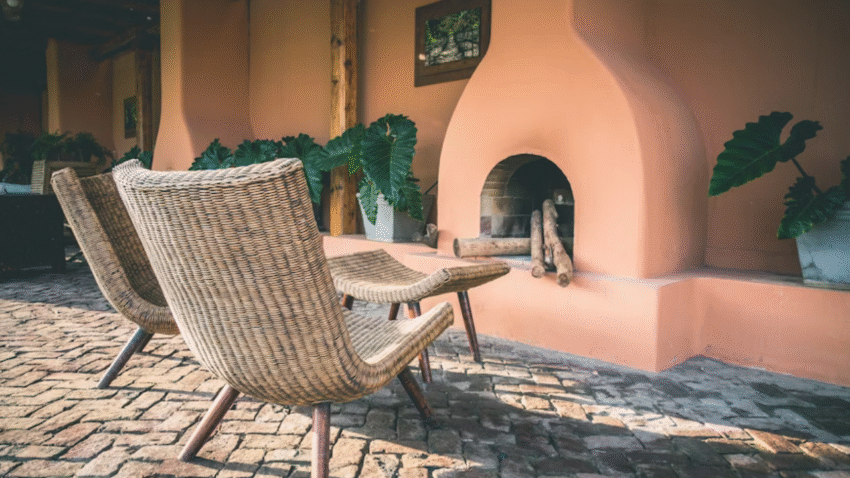Introduction
Concrete patios are durable and versatile, but they aren’t indestructible. Exposure to rain, snow, and temperature swings can cause water to seep into pores and cracks, leading to stains, erosion, and even structural damage over time. Learning how to waterproof a concrete patio is the key to extending its lifespan, preventing costly repairs, and keeping your outdoor space looking its best.
Why Waterproofing a Concrete Patio Matters
Even though concrete seems solid, it’s porous by nature. Without waterproofing, water seeps in and causes problems:
- Cracking and Erosion: Freeze-thaw cycles expand moisture inside concrete.
- Mold and Mildew Growth: Damp surfaces become slippery and unattractive.
- Staining: Oils, food, and leaves penetrate unsealed concrete.
- Shortened Lifespan: Constant exposure reduces strength and durability.
By applying a waterproofing solution, you protect your investment, make cleaning easier, and enhance your patio’s appearance.
Step-by-Step Guide to Waterproofing a Concrete Patio
1. Inspect the Patio Surface
Look for cracks, chips, or stains before starting. Mark areas that need repair. Waterproofing works best on a clean, solid surface.
2. Gather Tools and Materials
You’ll need:
- Concrete cleaner or degreaser
- Stiff-bristle broom or scrub brush
- Pressure washer or garden hose with nozzle
- Crack filler or patching compound
- Concrete sealer or waterproofing product (penetrating sealer, film-forming sealer, or epoxy coating)
- Roller, brush, or pump sprayer
- Protective gear: gloves, goggles, mask
3. Clean the Patio Thoroughly
- Sweep away dirt, leaves, and debris.
- Apply concrete cleaner or degreaser to remove oil or stains.
- Scrub with a brush or use a pressure washer for deep cleaning.
- Rinse thoroughly and allow the surface to dry for at least 24 hours.
4. Repair Cracks and Holes
Waterproofing won’t seal damaged concrete.
- Fill small cracks with concrete crack filler.
- Patch larger holes with a concrete patching compound.
- Let repairs cure fully before sealing.
5. Choose the Right Waterproofing Product
There are several types of sealers for different needs:
- Penetrating Sealers (Silane/Siloxane): Soak into concrete, protecting from within without changing appearance. Best for freeze-thaw climates.
- Acrylic Sealers: Form a protective film on the surface, available in matte or glossy finishes. Great for decorative patios.
- Epoxy or Polyurethane Coatings: Provide heavy-duty protection, creating a hard, durable layer. Ideal for high-traffic areas.
Pick the product that fits your patio’s use, climate, and style.
6. Protect Surrounding Areas
Cover plants, siding, and nearby furniture with tarps or plastic sheeting to prevent overspray or drips.
7. Apply the Sealer
- Start at one corner and work your way across.
- For penetrating sealers: Use a pump sprayer or roller for even coverage. Apply until the surface looks saturated.
- For film-forming or epoxy sealers: Use a roller or brush, applying thin, even coats.
- Work in small sections to avoid lap marks.
8. Apply a Second Coat (If Needed)
Many products require two coats for full waterproofing. Wait until the first coat dries (per manufacturer’s instructions) before applying the second.
9. Allow to Cure
Keep the patio free of foot traffic, furniture, and water for 24–48 hours. Full curing may take up to 72 hours depending on the product.
10. Maintain the Seal
Most waterproofing solutions last 2–5 years. To maintain protection:
- Reapply sealer as needed.
- Clean regularly to prevent buildup of dirt or mold.
- Inspect annually for cracks or wear.
Common Mistakes to Avoid
- Mistake: Skipping Cleaning
Sealer won’t adhere to dirt, grease, or mildew.
Solution: Always deep clean before waterproofing. - Mistake: Sealing Wet Concrete
Moisture prevents absorption or adhesion.
Solution: Let patio dry at least 24 hours before sealing. - Mistake: Using Indoor Products Outdoors
Indoor sealers won’t withstand weather.
Solution: Choose outdoor-rated waterproofing products. - Mistake: Applying Too Thick a Coat
Thick coats cause peeling or uneven finishes.
Solution: Apply thin, even layers as directed. - Mistake: Ignoring Cracks
Water seeps in through unpatched damage.
Solution: Repair cracks before sealing.
Extra Patio & Deck Tips & Hacks
- Add slip-resistant grit to film-forming sealers for safer surfaces.
- Choose tinted sealers to refresh patio color while waterproofing.
- For eco-friendly sealing, look for low-VOC or water-based products.
- In high-rainfall areas, slope the patio slightly away from your home for natural drainage.
Want more protection tips? Check out our guide on how to fix cracks in a concrete patio before sealing.
Conclusion
Learning how to waterproof a concrete patio is essential for protecting it from weather, stains, and wear. By cleaning thoroughly, repairing cracks, and applying the right sealer, you’ll extend your patio’s life while keeping it attractive and safe.
Pro tip: Don’t wait until damage appears—seal every few years as part of regular maintenance to keep your patio strong and beautiful. Bookmark this guide to make waterproofing an easy, repeatable part of your outdoor care routine.
